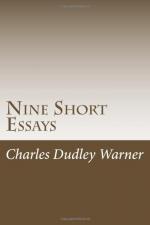In a Memorial Day address at New Haven in 1881, the Hon. Richard D. Hubbard suggested the erection of a statue to Nathan Hale in the State Capitol. With the exception of the monument in Coventry no memorial of the young hero existed. The suggestion was acted on by the Hon. E. S. Cleveland, who introduced a resolution in the House of Representatives in the session of 1883, appropriating money for the purpose. The propriety of this was urged before a committee of the Legislature by Governor Hubbard, in a speech of characteristic grace and eloquence, seconded by the Hon. Henry C. Robinson and the Hon. Stephen W. Kellogg. The Legislature appropriated the sum of five thousand dollars for a statue in bronze, and a committee was appointed to procure it. They opened a public competition, and, after considerable delay, during which the commission was changed by death and by absence,—indeed four successive governors, Hubbard, Waller, Harrison, and Lounsbury have served on it,—the work was awarded to Karl Gerhardt, a young sculptor who began his career in this city. It was finished in clay, and accepted in October, 1886, put in plaster, and immediately sent to the foundry of Melzar Masman in Chicopee, Massachusetts.
Today in all its artistic perfection and beauty it stands here to be revealed to the public gaze. It is proper that the citizens of Connecticut should know how much of this result they owe to the intelligent zeal of Mr. Cleveland, the mover of the resolution in the Legislature, who in the commission, and before he became a member of it, has spared neither time nor effort to procure a memorial worthy of the hero and of the State. And I am sure that I speak the unanimous sentiment of the commission in the regret that the originator of this statue could not have seen the consummation of his idea, and could not have crowned it with the one thing lacking on this occasion, the silver words of eloquence we always heard from his lips, that compact, nervous speech, the perfect union of strength and grace; for who so fitly as the lamented Hubbard could have portrayed the moral heroism of the Martyr-Spy?
This is not a portrait statue. There is no likeness of Nathan Hale extant. The only known miniature of his face, in the possession of the lady to whom he was betrothed at the time of his death, disappeared many years ago. The artist was obliged, therefore, to create an ideal figure, aided by a few fragmentary descriptions of Hale’s personal appearance. His object has been to represent an American youth of the period, an American patriot and scholar, whose manly beauty and grace tradition loves to recall, to represent in face and in bearing the moral elevation of character that made him conspicuous among his fellows, and to show forth, if possible, the deed that made him immortal. For it is the deed and the memorable last words we think of when we think of Hale. I know that by one of the canons of art it is held that sculpture should rarely fix a momentary action;




